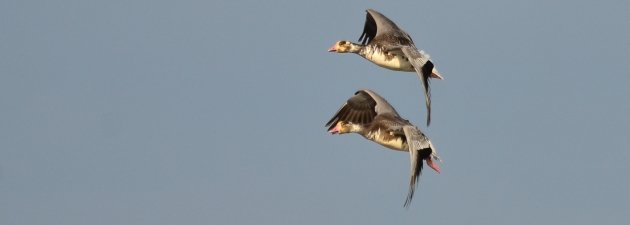
Recently I ditched the coast and headed into the bowels of the Central Valley, to meet up with an old friend…you may know him by the name “Falcated Duck“. Falcated Duck eluded us at first, but eventually let us stare at him at will. But this post is not about Falcated Duck.
We were at Colusa National Wildlife Refuge, of course, which is not only home to Falcated Duck, but many other birds. There are hordes of fowl here (fowl of the water) in winter, with geese having the most prominent presence.
Snow, Ross’s, Greater White-fronted (all pictured above) and Cackling Geese can all be easily seen, very conveniently, at Colusa.
There is no shortage of Snow Geese, and no shortage of birds that feel right at home hanging out just a stone’s throw from you at the viewing platform.
A handful of “blue” Snow Geese can be expected as well.
Along with Snows, Greater White-fronted Goose are one of the most abundant species here.
So there we were, admiring the loud and very close multitudes of geese, occasionally pausing to look at a Eurasian Wigeon while waiting for Falcated Duck to make an appearance. We were just minding our own business, completely innocently, when this group of birds came along. We couldn’t believe it.
They made a close pass, and my worst fears were confirmed…we were looking at hybrid geese. Look! Do you see? These birds look are abominations. Geese, of course, are known to be down to get down with other species, because they’re kinky like that. I’ve seen the offspring of Canada and barnyard geese, Canada and Swan Geese, and everyone’s favorite, Snow X Ross’s Geese. In fact, this hybrid is so popular that sources tell me every Ross’s Goose east of the Mississippi has some hybrid theorist trying to convince everyone the bird “impure”(lets get it together, eastern birders). Apparent Barnacle X Cackling Geese have even been documented in the U.S. But these geese…these geese are something else. These are Snow X Greater-white fronted Geese!
This was a life hybrid combination for me, so I was pretty stoked. Note the white ring (stained yellow here, from foraging) around the bill that is diagnostic for white-fronted, the patchy head and breast pattern, black “grin patch”, extensive white on the uppertail coverts, and reduced white in the wing linings (compare with the blue goose above). One of the photogs present said he saw these birds as youngsters the previous winter, accompanied by an adult Snow and a Greater white-fronted.
Has anyone else been confronted with birds of this combination before? I get goosebumps just thinking about it..


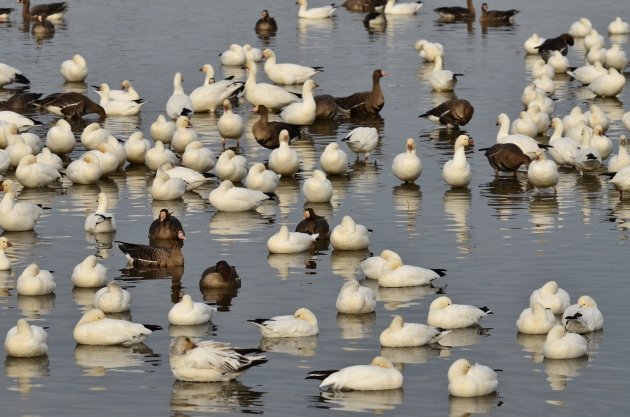
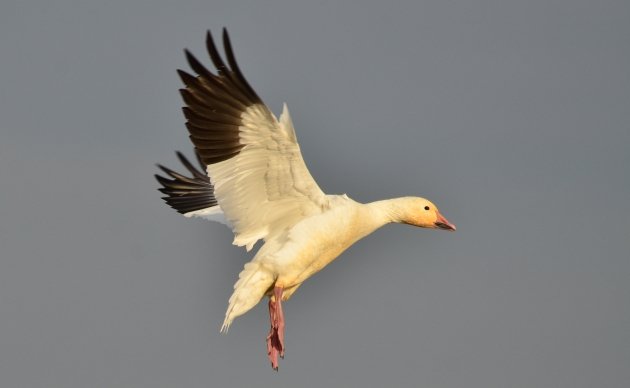
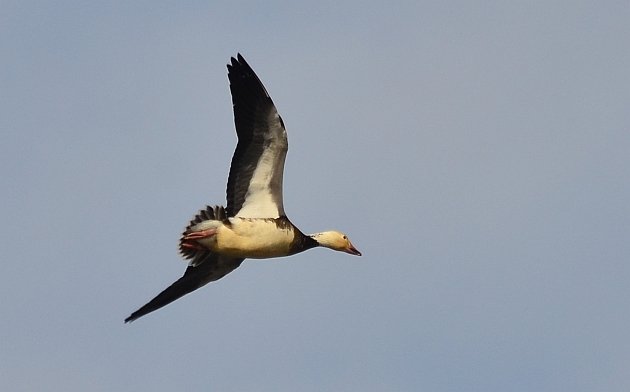
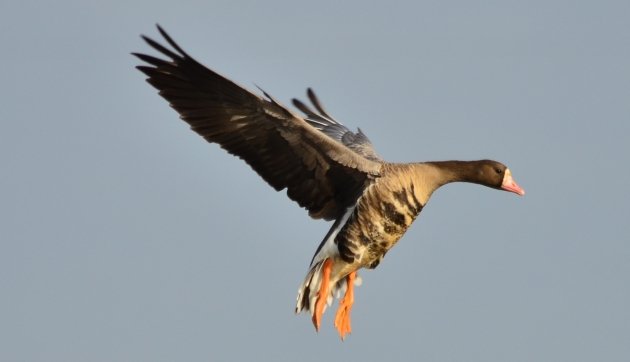
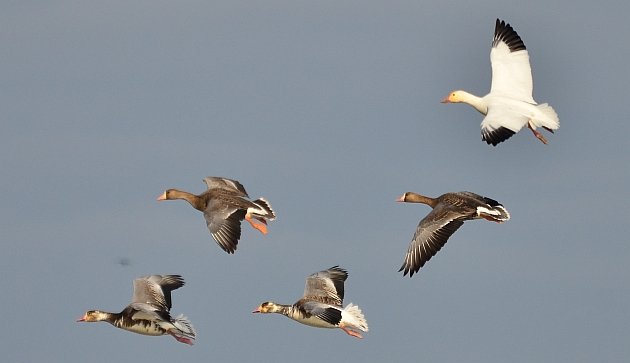
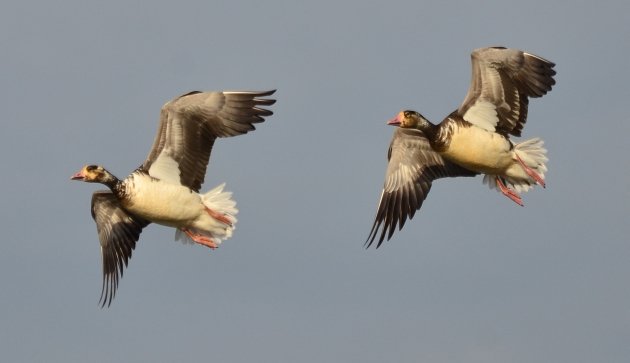
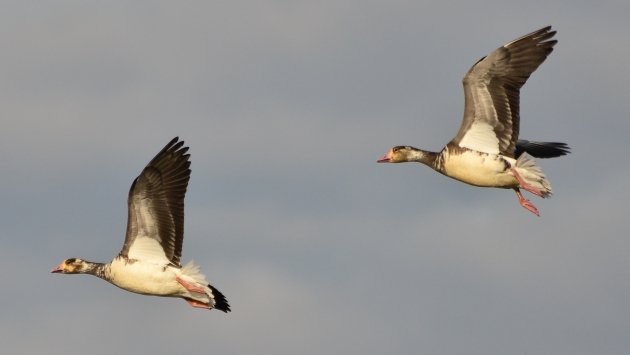
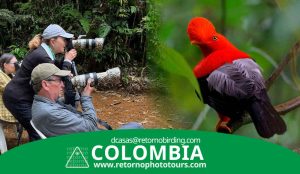


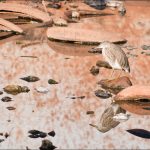
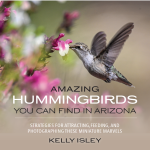
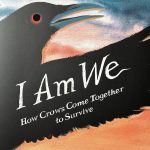
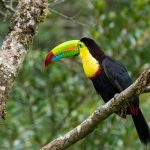

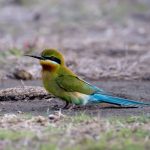
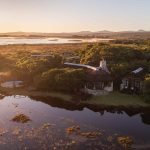
No you didn’t! Awesome. High five!
@Corey: I see what you did there.